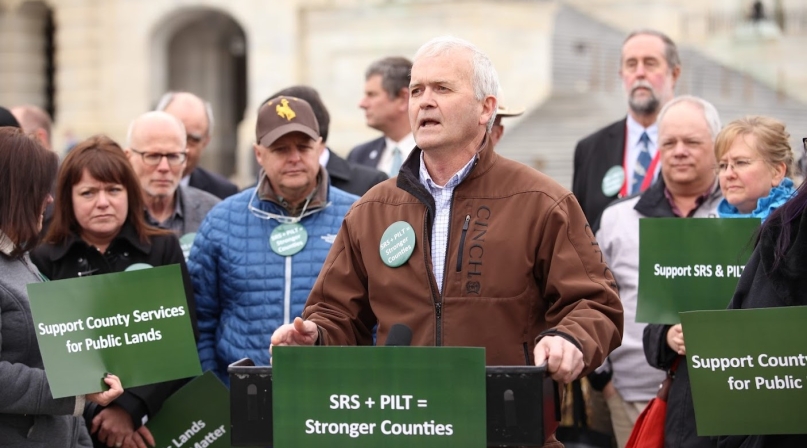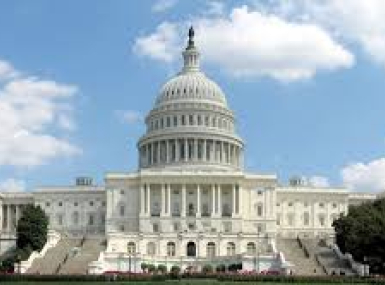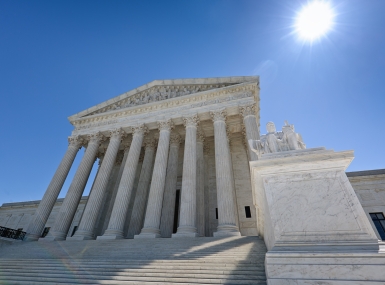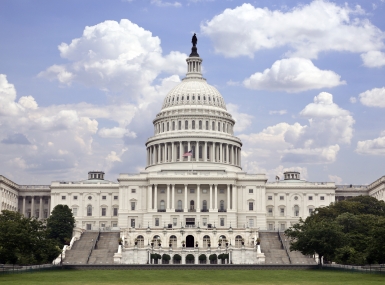Montana counties buck state on skyrocketing property tax increases

Key Takeaways
Things don’t add up in Montana. Or they add up to too much.
With a massive residential reassessment in the works for 2023 after a two-year population boom, Beaverhead County Commissioner Mike McGinley figured the state’s formula for levying property taxes to fund schools would go down to keep everything in balance and avoid a significant hike.
But as the year went on, he was proven wrong, to the point where it was apparent the state intended to reap nearly $78 million in excess revenue as counties started preparing their tax bills.
“We’ve been trying to make the case that there’s no way any government entity needs to increase revenue by 35% in one year,” McGinley said.
Now, with most of the state’s 56 counties adjusting their rates down to avoid overcharging residents, it’s hard for McGinley to add up the looming legal actions. Gov. Greg Gianforte (R) sued Missoula County.
A state senator has sued the state. A consortium of educational associations has sued every county.
A potential endgame would see every taxpayer sue their county, but that doomsday scenario is why the bulk of counties are trying to avoid over-collecting.
“Our property tax policy in Montana was never intended to take advantage of an increase in appraised values,” said Eric Bryson, executive director of the Montana Association of Counties.
“Schools, counties, cities all have to adjust their mills down when that happens, and McGinley started looking into why the state doesn’t have to and that’s where this came from.”
The Montana association has not taken a formal position on the issue, though officers have written to Gianforte expressing concern over the disparity in the situation.
“When values increase rapidly, mills subject to that provision-in-law are intended to be limited to the amount actually assessed in the previous year plus half the rate of inflation,” they wrote in early October.
The current taxation formula, in place since 2001, was meant to ensure adequate funding for public schools by providing a portion by way of school equalization property taxes from each county.
That rate has been 95 mills — each mill representing $1 per $1,000 of taxable value, but the Department of Revenue said the appropriate equalization rate in 2023 would be 77.9 — the level at which 53 of 56 counties are planning to set their rates by the end of October.
Proponents of the formula argue that it should remain proportional to increases in assessed values.
But school administrators, from Gallatin County to Richland County, have determined that counties lowering their millage to 77.9 would not affect their funding. The excess would, in fact, go into the state’s general fund and, following the passage of legislation this year, will divert it into a special fund to provide a second source of funding for state equalization aid.
A state Department of Revenue analysis showed the variety of overcharges counties would otherwise collect, ranging from nearly $33,000 in Petroleum County to $12.3 million in Gallatin County. Beaverhead would be looking at a $600,000 overcharge.
Attorney General Austin Knudsen declined Beaverhead County’s request to render an opinion on whether the state could charge 77.9 mills instead of 95, citing the potential for litigation.
In short, counties argue that they should be able to “float” millage to keep tax rates steady and the state wants to be able to bank extra revenue.
“This is a question that affects rural counties, urban counties, Democratic counties, Republican counties,” McGinley said.
“This is not a political issue, this is a taxpayer issue.”
The effect on property taxes has not been consistent across the state, with concentrated population growth happening in the west.
Custer County, in Eastern Montana, would figure to overcharge $430,000 under the current tax rate. At the same time, the tax was intended to fund less-resourced districts with proceeds from elsewhere in the state.
“In our area, we don’t have the new taxable value, like you’re seeing in the western part of the state,” said Jason Strouf, chairman of the Custer County Board of Commissioners.
“When you hear about property value increases averaging 40%-plus in some counties, our increase is quite a bit lower than that. For county residents outside our city limits, we were less than a 10% increase in value.”
We just didn’t feel that that was fair to the taxpayers,” Strouf said.
“It’s not appropriate that local governments are following the statute as intended but the same statute, the same wording, doesn’t apply when it affects the state in regard to these 95 mills. We just didn’t think that was equitable.”
Which suit fits?
The Gianforte administration has thus far only sued Missoula County, even as more than 40 counties have passed resolutions directing their treasurers to collect a lower rate. His suit centers on whether the state can “bank” mills.
“Based on the department’s longstanding interpretation and practice, if the maximum number of mills authorized under the formula exceeds the statutory cap of 95 mills, then the department carries forward or ‘banks’ the mills that it could have implemented under” the 2001 statute.
Sen. Brad Molnar (R) argues in his suit against the state that because of the “enormous increase in property values recently,” the Department of Revenue’s 77.9 mill calculation satisfies the requirements of the State Mill Statutes.
“Despite lacking authority to carry forward mills from prior years, DOR has unlawfully purported to do exactly that by adding 17.11 mills to its calculation for 2023, bringing the total to 95 mills.
“DOR has no lawful authority to cause counties to levy these additional, unlawful 17.11 mills on Montana property owners.”
The Montana Quality Education Coalition, an advocacy organization founded to combat the state’s underinvestment in public schools, has asked the state Supreme Court to compel counties to collect 95 mills, and Bryson welcomes the opportunity to get someone in state government to render an opinion, which the attorney general failed to do following Beaverhead County’s request.
“We’re not mad at the schools, we’re not mad at the coalition of educators and we’re not mad at the state, we just need the question answered, because boards of county commissioners across the state were left with two choices: Levy 95 mills, which the Department of Revenue told them they wanted them to, or levy 77.9 mills, which the Department of Revenue told them they have the authority to levy,” Bryson said. That’s it.”







